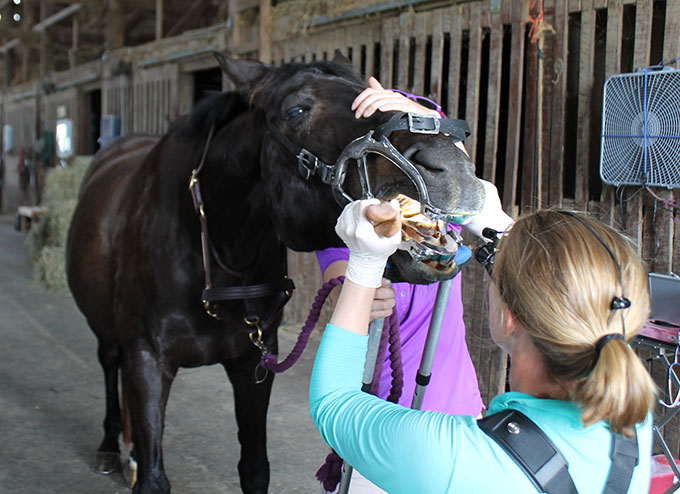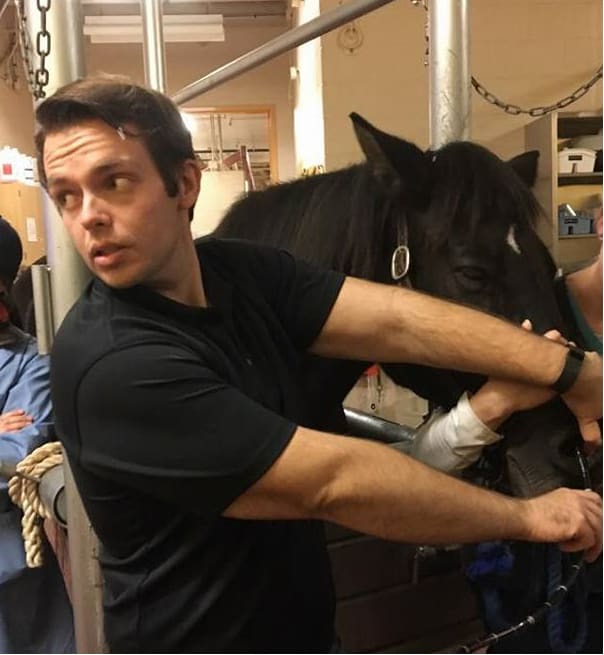Sedation for Standing Procedures

How Are Horses Sedated for Standing Procedures?
The most common drugs I use to sedate horses are xylazine, detomidine, and butorphanol. I use them all a little differently, so let’s break down their key features:
- Xylazine is mostly given intravenously, but it can also be used intramuscularly. It’s a fast-acting sedative and usually works within minutes of administration. I use xylazine primarily for procedures when the horse won’t need to be sedated for long, such as rectal palpations and nasogastric intubations. Xylazine lasts roughly 20 to 30 minutes.
- Detomidine is the same kind of drug as xylazine, but it lasts much longer. It can be given in the vein or muscle (an oral gel is also available and can be prescribed for use during farrier visits, body clipping, etc.). Detomidine is my primary sedative for most invasive procedures—oral exams, joint injections, laceration repairs, chokes, and anything I want my patient to be nice and sleepy for while I’m working on them. Often, detomidine will keep a horse sedated for upward of an hour.
- Butorphanol is different than the other sedatives in that it is an opioid. Because it is a controlled substance, like ketamine or diazepam, I keep track of every milliliter I use, for legal purposes. I use butorphanol for a number of reasons; it helps my other sedatives work, can provide pain relief during colic, and can help keep a horse’s feet planted for joint injections. It can be given intravenously or intramuscularly. I don’t administer butorphanol alone, so recovery time usually depends on either the xylazine or detomidine I pair it with.
What To Expect When a Horse Is Sedated
Clients often observe a sedated horse and comment, “He looks like he’s going to fall over!” This is deliberate. I want the horse’s nose almost to the ground in what is called “the five-point stance.” Keeping the people around a sedated horse safe is important; however, despite owners’ concerns about how wobbly horses look during sedation, I’ve yet had one fall over on me.
Sedation can also cause horses to sweat, which is transient and usually resolves itself as the horse wakes up. Rarely, I will put them in front of a fan to cool.
Recovery Time
After I complete whatever procedure I’m doing, I usually guide the horse back to a stall to wake up. Sedated horses can be unstable, so I have my technician carefully take the horse’s head as I steady their tail while they walk. I make sure the stall has no hay or grain, as sedated horses might try to eat and develop a choke.
I often tell people they can feed or travel with their horse as soon as the animal is acting normal, whether that be a spunky, curious gelding getting into everything or the old, cankerous mare pinning her ears at her pasturemates. While every horse is different, they often recover between 45 minutes to an hour.
Final Thoughts
I will, on occasion, have a client comment that Dr. XYZ never had to sedate way back in the day. That might have been the case, but I require sedation to practice the highest standard of care for my equine patients.

Written by:
Chris White, DVM
Related Articles
Stay on top of the most recent Horse Health news with















